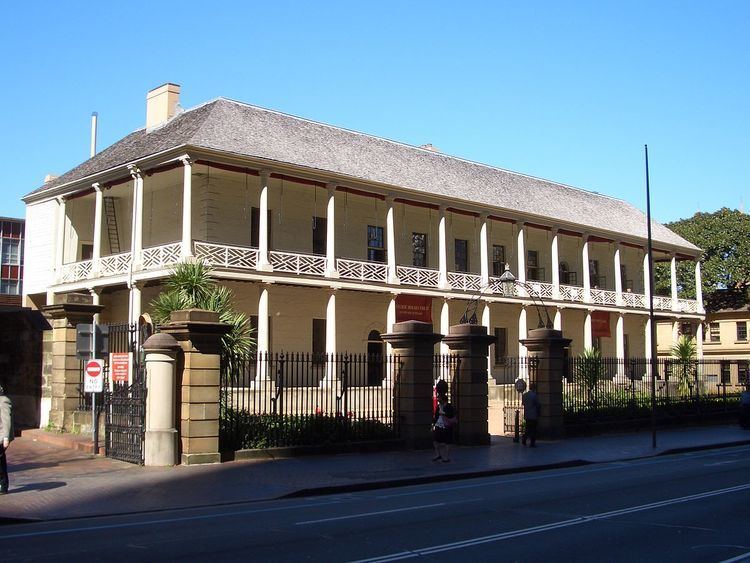Opened 1816/1854 | ||
 | ||
Location Macquarie Street, Sydney, Australia | ||
The Sydney Mint in Sydney, Australia, is the oldest public building in the Sydney Central Business District. Built between 1811 and 1816 as the southern wing of the Sydney Hospital, it was then known as the Rum Hospital. In 1854 a mint was established on the site with the hospital building used to house mint staff as well as providing a residence for the Deputy Mint Master. A coining factory was built at the rear. Both of these structures have exceptional heritage significance and have been associated with major events in New South Wales history.
Contents
- General Hospital and The Dispensary 18111854
- Royal Mint and the Coining Factory 18551926
- Government offices Law Courts and the Museum 1927present
- References
Located in Sydney’s CBD at 10 Macquarie Street, it is near many other famous Australian historical buildings including Hyde Park Barracks, St James' Church and Parliament House. The building is now the head office of the Historic Houses Trust of New South Wales. Sections of the building are open to the public.
General Hospital and The Dispensary (1811–1854)
In 1811, Governor Lachlan Macquarie commenced planning for a new general hospital in Sydney which was to be his first major public building. The contractors were paid with 45,000 gallons of rum hence the name Rum Hospital. Construction was completed in 1816.
Its design is loosely based on ancient Greek architecture with its two tiers of columns made of cedar timber in the style of Doric mouldings. The columns are angled inwards creating an optical illusion imitating the Parthenon in Athens, Greece.
A dispensary opened in 1842 replacing the south wing after which the rest of the site was used as a military hospital until 1854.
Royal Mint and the Coining Factory (1855–1926)
The British Secretary of State gave acceptance to the colonial government to establish a mint in Sydney which was to be the first branch of the Royal Mint outside England. The rear side of the mint became the coining factory. There were frequently major upgrades on the mint during the late 1800s and the early 1900s. However, by 1926, with the Melbourne and Perth Mints having much better technology and being more profitable, the mint was closed.
In 1854, 19 year old William Stanley Jevons and Francis Bowyer Miller were appointed Assayers to the Mint. Captain Edward Wolstenholme, of Royal Engineers, was appointed Deputy Master and Chief Officer, Charles Elonis Superintendent of the Bullion Office, Joseph Trickett Superintendent of the Coining Department, Robert Huat First Clerk in the Bullion Office and Elliott Knipe Registrar and Accountant.
Government offices, Law Courts and the Museum (1927–present)
The Government Insurance Office moved into the building as soon as the Mint closed. Soon other government offices followed, including the Local Government Superannuation Board, the Electrical Contractors and Licensing Board and the Family Endowment Department. Government offices kept arriving and going for another fifty years. Gradually these buildings were being demolished.
It was expected that law courts would be established after the demolitions, however activists successfully led a campaign in 1979 to preserve the Mint buildings as well as Hyde Park Barracks. The premier of New South Wales, Neville Wran, announced that the Mint would come under control of the Museum of Applied Arts and Sciences. The museum closed down in 1997 and the building’s ownership was transferred to the Historic Houses Trust.
The Mint was recently named as one of 30 projects that have reshaped the built environment since 1978. "The refurbishment project is an example of the Integration of services systems (by Steensen Varming ), to provide a modern, functional headquarters while minimising the impact on the heritage and archaeological fabric of a site."
